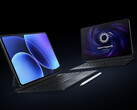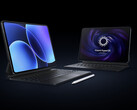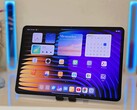Verdict on the Xiaomi Pad 8 Pro
Like its predecessor, the Xiaomi Pad 8 Pro offers great value for money and is particularly interesting for users looking for a powerful Android tablet with pen support.
The Snapdragon 8 Elite SoC is beyond reproach and, in combination with the HyperOS 3 interface and the 144 Hz panel, is extremely powerful. Even a premium tablet like the Samsung Galaxy Tab S11 is left behind in terms of raw performance.
Although the 11.2-inch 3:2 display of the Pad 8 Pro is only an LCD and not an OLED, there is little to criticize thanks to its high resolution, very good contrasts, and an appealing peak brightness.
The PWM-free display in particular ensures a pleasant viewing experience without flickering — a big plus point for sensitive users, given that the screen of the Pad 8 Pro is a class above a significantly more expensive Apple iPad Air 11.
The Xiaomi tablet still leaves question marks in terms of global availability and, as a result, certain restrictions of the Chinese version of HyperOS 3 in matters of update policy, system language, etc., have to be accepted.
Pros
Cons
Price and availability of the Xiaomi Pad 8 Pro
The Xiaomi Pad 8 Pro costs ¥2,799 (approx. €335 or $394) in its base version. As an import, prices start at around €500. Details on an international launch are still pending.
Similar to the Xiaomi Pad 7 Pro, a global market launch for the current Pro model is probably only a matter of time. MWC in spring 2026 is a likely date.
Table of Contents
- Verdict on the Xiaomi Pad 8 Pro
- Specifications of the Xiaomi Pad 8 Pro
- Build: Android tablet with aluminum unibody
- Features: Pad 8 Pro with fast USB 3.2
- Software: New HyperOS 3 on the Pad 8 Pro
- Communication and GNSS: Android tablet with Wi-Fi 7 but no 5G
- Cameras: Pad 8 Pro supports HDR and 4K60 recording
- Accessories and Warranty: Xiaomi Pad 8 Pro comes with power adapter
- Input devices and operation: 11-inch tablet with fingerprint sensor
- Display: Pad 8 Pro relies on LCD
- Performance: Pad 8 Pro impresses with Snapdragon 8 Elite
- Games: An interesting tablet for gamers
- Emissions: Powerful tablet with little throttling
- Energy management: Pad 8 Pro offers endurance
- Notebookcheck's overall impressions of the Xiaomi Pad 8 Pro
- Potential alternatives in comparison
Xiaomi has launched a new iteration of the much-vaunted Pad 7 Pro on the market. The new Pad 8 Pro is mainly characterized by upgrades to the Snapdragon 8 Elite SoC and a slightly larger battery.
Otherwise, the Pad 8 Pro's improvements are largely incremental. In this review, we look into the aspects that Xiaomi has improved and how it fares against the competition.
Specifications of the Xiaomi Pad 8 Pro
Build: Android tablet with aluminum unibody
The Pad 8 Pro comes in a slim metal casing with a height of just 5.8 mm. The matte surface of the aluminum unibody ensures that fingerprints are barely visible. With a weight of 485 g, the Pad 8 Pro is also 15 g lighter than its predecessor.
There is no official IP certification for the Chinese version, although this information is usually only known for global Xiaomi tablets. We assume that the successor to the Pad 7 Pro will again have an IP52 rating.
We think the overall design is very successful, with the Pad 8 Pro looking very much like an Apple iPad Pro visually.
The display impresses with a good screen-to-body ratio of over 86% and an appealing appearance with fairly narrow edges. However, it is not clear which protective glass is used for the Chinese version. Xiaomi will likely stick Gorilla Glass 3 as with the Pad 7 Pro.
Features: Pad 8 Pro with fast USB 3.2
An upgrade compared to the predecessor is the faster LPDDR5T memory and UFS 4.1 storage, although the basic configuration of the Pad 8 Pro only offers LPDDR5X and UFS 3.1 as standards.
The USB Type-C port complies with the USB 3.2 standard, which allows data to be transferred quickly at 5 Gbit/s speeds. With the help of an adapter, the USB port can also be used as an output for display signals on external screens.
Other features include an infrared interface, stylus support, Miracast, and USB OTG. Xiaomi's HyperConnect service for cross-device use of HyperOS devices and a workstation mode are also available.
Display content from macOS and iPad OS can also be mirrored on the Pad 8 Pro.
Software: New HyperOS 3 on the Pad 8 Pro
The Pad 8 Pro is equipped with the company's own HyperOS 3, which is based on the latest Android 16. This gives the Xiaomi tablet more flexible window management and new animations. According to the manufacturer, HyperOS 3 can be expected to speed up the app response times by 21% and reduce power consumption by 9% when gaming.
Our Chinese version only supports an English language pack ex-works and no PlayStore. While the latter can simply be installed later, you will have to wait for a global version for the German system language. This also applies to an official update promise.
Bootloader unlocks require the Chinese ROM to be used since the unlocking of the bootloader under HyperOS is problematic to implement outside of China.
In terms of software updates, Xiaomi is reluctant to provide information on the Chinese website. At the time of testing, the Pad 8 Pro was running fairly up-to-date security patches from October 2025.
The imported device with a Chinese ROM can be expected to receive three to four years of security patches.
Sustainability
Xiaomi uses outer packaging without plastic for its tablet. Some of the accessories are covered with a paper film. The company does not provide any information on reparability and CO2 footprint, nor whether and how many recycled materials are used.
Communication and GNSS: Android tablet with Wi-Fi 7 but no 5G
The Pad 8 Pro is equipped with fast Wi-Fi 7 including MU-MIMO support and transmits at a high speed in our measurements. However, the Xiaomi tablet still has some room for improvement when sending and receiving in the 6 GHz 6E band.
Although we determined transfer rates of over 1,600 Mbps at the peak in combination with the Asus ROG Rapture GT-AXE11000 router, the Pad 8 Pro shows weaknesses in the consistency of wireless transmission.
The Pad 8 Pro does not offer the option to use mobile data and does not support positioning via satellite systems.
| Networking | |
| Xiaomi Pad 8 Pro | |
| iperf3 transmit AXE11000 | |
| iperf3 receive AXE11000 | |
| iperf3 transmit AXE11000 6GHz | |
| iperf3 receive AXE11000 6GHz | |
| Lenovo Yoga Tab | |
| iperf3 transmit AXE11000 6GHz | |
| iperf3 receive AXE11000 6GHz | |
| Samsung Galaxy Tab S11 | |
| iperf3 transmit AXE11000 | |
| iperf3 receive AXE11000 | |
| iperf3 transmit AXE11000 6GHz | |
| iperf3 receive AXE11000 6GHz | |
| Apple iPad Air 11 2025 | |
| iperf3 transmit AXE11000 6GHz | |
| iperf3 receive AXE11000 6GHz | |
| Xiaomi Pad 7 Pro | |
| iperf3 transmit AXE11000 | |
| iperf3 receive AXE11000 | |
| Average 802.11 a/b/g/n/ac/ax/be | |
| iperf3 transmit AXE11000 | |
| iperf3 receive AXE11000 | |
| iperf3 transmit AXE11000 6GHz | |
| iperf3 receive AXE11000 6GHz | |
| Average of class Tablet | |
| iperf3 transmit AXE11000 | |
| iperf3 receive AXE11000 | |
| iperf3 transmit AXE11000 6GHz | |
| iperf3 receive AXE11000 6GHz | |
Cameras: Pad 8 Pro supports HDR and 4K60 recording
In terms of cameras, the Pad 8 Pro remains unchanged from its predecessor. There is a 32 MP ultra-wide-angle lens with an f/2.2 aperture and fixed focus on the front. Photos have decent sharpness, and the exposure is satisfactory as well.
The 50 MP main camera of the Pad 8 Pro is characterized by a higher resolution and phase detection autofocus. The Samsung JN1 sensor used ensures a solid dynamic range and detailed photos in good lighting conditions. There is also nothing much to criticize for a tablet in terms of colour fidelity.
If you want to use your tablet for taking photos of documents or presentations, the Xiaomi Pad is a very good choice. However, the 50 MP main camera quickly reaches its limits when zooming in, and a magnification of more than 3x is accompanied by a significant loss of quality.
Videos can at best be recorded in 4K Ultra HD at 60 fps.
Image comparison
Choose a scene and navigate within the first image. One click changes the position on touchscreens. One click on the zoomed-in image opens the original in a new window. The first image shows the scaled photograph of the test device.
Main cameraMain cameraLow light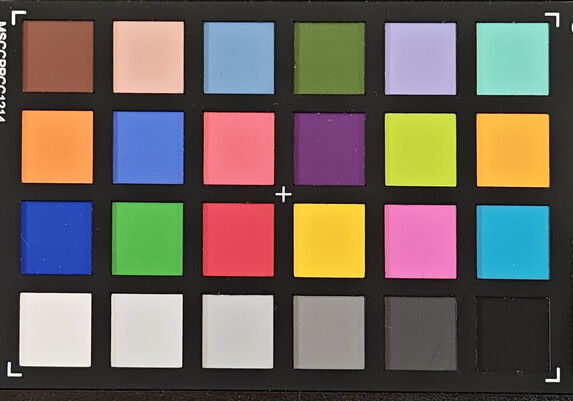
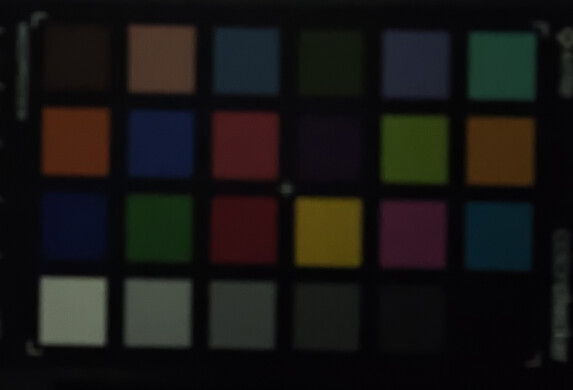
Accessories and Warranty: Xiaomi Pad 8 Pro comes with power adapter
The Pad 8 Pro comes with a 67 W fast-charging power adapter and a data or charging cable (USB Type-A to Type-C). Our loaner Trading Shenzhen adds an EU adapter for the charger to the scope of delivery of our Chinese version.
Xiaomi also offers a stylish keyboard cover in the style of an Apple Magic Keyboard, and a Focus Pen Pro stylus for the Pad 8 Pro.
Our imported device has a warranty of 12 months. In the event of a warranty claim, Trading Shenzhen offers the option of sending the tablet to a German shipping address.
Input devices and operation: 11-inch tablet with fingerprint sensor
The 11.2-inch LC display of the Pad 8 Pro impresses with precise input and a high sampling rate of up to 1,080 Hz. This means that the touchscreen refreshes up to 1,080 times per second to retrieve input. Animations of the HyperOS 3 user interface also benefit from the high 144 Hz refresh rate.
The newly introduced Focus Pen Pro, weighing just 18 g, is available for handwritten notes and is said to enable very fine input with over 16,000 pressure levels. The latency is also said to be just 1 ms. Compared to the Focus Pen, the Pro model completely dispenses with physical buttons.
A fingerprint sensor in the on/off button on the left-hand side of the tablet unlocks the screen. This is easily accessible with the index finger and works reliably and quickly.
Alternatively, the Pad 8 Pro offers less secure 2D facial recognition via the front camera.
Display: Pad 8 Pro relies on LCD
The 11.2-inch 144 Hz LCD panel of the Pad 8 Pro comes in a 3:2 format with a resolution of 3,200 x 2,136 pixels and a high 445 ppi pixel density. For comparison, an iPad Air 11 only manages 265 ppi.
The Xiaomi tablet is also in a different league when it comes to brightness. The peak brightness in our APL18 measurement is 778 cd/m². A triple certification by TÜV Rheinland is also available.
Due to the LCD technology used, we cannot detect any flickering even at low brightness, which makes the Pad 8 Pro suitable for PMW-sensitive users.
| |||||||||||||||||||||||||
Brightness Distribution: 96 %
Center on Battery: 626 cd/m²
Contrast: 2087:1 (Black: 0.3 cd/m²)
ΔE ColorChecker Calman: 1.64 | ∀{0.5-29.43 Ø4.78}
ΔE Greyscale Calman: 3.1 | ∀{0.09-98 Ø5}
99.8% sRGB (Calman 2D)
Gamma: 2.2
CCT: 6746 K
| Xiaomi Pad 8 Pro LCD, 3200x2136, 11.2" | Lenovo Yoga Tab LTPS, 3200x2000, 11.1" | Samsung Galaxy Tab S11 OLED - Dynamic AMOLED 2X, 2560x1600, 11" | Apple iPad Air 11 2025 IPS, 2360x1640, 10.9" | Xiaomi Pad 7 Pro IPS, 3200x2136, 11.2" | |
|---|---|---|---|---|---|
| Screen | -5% | -3% | -5% | -10% | |
| Brightness middle (cd/m²) | 626 | 609 -3% | 946 51% | 508 -19% | 776 24% |
| Brightness (cd/m²) | 617 | 583 -6% | 938 52% | 497 -19% | 750 22% |
| Brightness Distribution (%) | 96 | 91 -5% | 96 0% | 93 -3% | 91 -5% |
| Black Level * (cd/m²) | 0.3 | 0.4 -33% | 0.5 -67% | 0.58 -93% | |
| Contrast (:1) | 2087 | 1523 -27% | 1016 -51% | 1338 -36% | |
| Colorchecker dE 2000 * | 1.64 | 1.81 -10% | 3.5 -113% | 1.13 31% | 1.6 2% |
| Colorchecker dE 2000 max. * | 4.13 | 2.98 28% | 5.5 -33% | 2.49 40% | 4.5 -9% |
| Greyscale dE 2000 * | 3.1 | 2.5 19% | 2.4 23% | 1.7 45% | 2.5 19% |
| Gamma | 2.2 100% | 1.934 114% | 2.02 109% | 2.173 101% | 2.23 99% |
| CCT | 6746 96% | 6853 95% | 6322 103% | 6747 96% | 6892 94% |
* ... smaller is better
Screen Flickering / PWM (Pulse-Width Modulation)
| Screen flickering / PWM not detected | |||
In comparison: 53 % of all tested devices do not use PWM to dim the display. If PWM was detected, an average of 8149 (minimum: 5 - maximum: 343500) Hz was measured. | |||
Differences in individual colors and grayscale levels are barely noticeable in the "Original Pro" color profile.
Our measurement with the X-rite i1Basic Pro 3 shows a low value of 0.3 cd/m² for the black level. The contrast ratio of the LCD is also very good at around 2,000:1.
Display Response Times
| ↔ Response Time Black to White | ||
|---|---|---|
| 22.8 ms ... rise ↗ and fall ↘ combined | ↗ 11.6 ms rise | |
| ↘ 11.2 ms fall | ||
| The screen shows good response rates in our tests, but may be too slow for competitive gamers. In comparison, all tested devices range from 0.1 (minimum) to 240 (maximum) ms. » 50 % of all devices are better. This means that the measured response time is worse than the average of all tested devices (20.3 ms). | ||
| ↔ Response Time 50% Grey to 80% Grey | ||
| 33.5 ms ... rise ↗ and fall ↘ combined | ↗ 17.8 ms rise | |
| ↘ 15.7 ms fall | ||
| The screen shows slow response rates in our tests and will be unsatisfactory for gamers. In comparison, all tested devices range from 0.165 (minimum) to 636 (maximum) ms. » 45 % of all devices are better. This means that the measured response time is similar to the average of all tested devices (31.7 ms). | ||
The Pad 8 Pro also impresses with good readability outdoors thanks to its decent brightness.
If you want to avoid annoying reflections, you can optionally select the LCD option with a Nano Soft Light display technology, essentially a matte coating. On our test sample with a high-gloss screen, reflections on the glass surface are clearly visible.
When viewed flat, the display is true to color. The slight clouding that is typical of LC displays when the display is completely black is hardly annoying in everyday use.
Performance: Pad 8 Pro impresses with Snapdragon 8 Elite
The Snapdragon 8 Elite SoC makes the Pad 8 Pro one of the fastest mid-range Android tablets currently available. In the Geekbench benchmarks, the Xiaomi tablet achieves very good scores, easily beating a Galaxy Tab S11 featuring the MediaTek Dimensity 9400+.
The scores in Geekbench AI are also really good for a tablet with the Snapdragon 8 Elite.
| PCMark for Android - Work 3.0 | |
| Lenovo Yoga Tab | |
| Average Qualcomm Snapdragon 8 Elite (14366 - 27428, n=23) | |
| Xiaomi Pad 7 Pro | |
| Average of class Tablet (4622 - 27428, n=80, last 2 years) | |
| Samsung Galaxy Tab S11 | |
| CrossMark - Overall | |
| Average Qualcomm Snapdragon 8 Elite (1064 - 2674, n=18) | |
| Xiaomi Pad 7 Pro | |
| Average of class Tablet (227 - 2155, n=57, last 2 years) | |
| Samsung Galaxy Tab S11 | |
| Lenovo Yoga Tab | |
| UL Procyon AI Inference for Android - Overall Score NNAPI | |
| Samsung Galaxy Tab S11 | |
| Xiaomi Pad 8 Pro | |
| Lenovo Yoga Tab | |
| Average Qualcomm Snapdragon 8 Elite (8865 - 22767, n=17) | |
| Average of class Tablet (2597 - 76852, n=65, last 2 years) | |
| Xiaomi Pad 7 Pro | |
| AI Benchmark - Score V6 | |
| Xiaomi Pad 8 Pro | |
| Samsung Galaxy Tab S11 | |
| Average Qualcomm Snapdragon 8 Elite (302 - 17293, n=15) | |
| Average of class Tablet (70.4 - 17293, n=27, last 2 years) | |
| Xiaomi Pad 7 Pro | |
With the integrated graphics unit of the Snapdragon 8 Elite, the Pad 8 Pro is also very well positioned. The increase in GPU power compared to the Pad 7 Pro with a Snapdragon 8s Gen 3 is especially enormous.
In the GFXBench 4K test, the Adreno 840 achieved a very good 43 fps despite the high display resolution.
GFXBench (DX / GLBenchmark) 2.7: T-Rex Onscreen | 1920x1080 T-Rex Offscreen
GFXBench 3.0: on screen Manhattan Onscreen OGL | 1920x1080 1080p Manhattan Offscreen
GFXBench 3.1: on screen Manhattan ES 3.1 Onscreen | 1920x1080 Manhattan ES 3.1 Offscreen
GFXBench: on screen Car Chase Onscreen | 1920x1080 Car Chase Offscreen | on screen Aztec Ruins High Tier Onscreen | 2560x1440 Aztec Ruins High Tier Offscreen | on screen Aztec Ruins Normal Tier Onscreen | 1920x1080 Aztec Ruins Normal Tier Offscreen | 3840x2160 4K Aztec Ruins High Tier Offscreen
| 3DMark / Wild Life Extreme Unlimited | |
| Xiaomi Pad 8 Pro | |
| Samsung Galaxy Tab S11 | |
| Apple iPad Air 11 2025 | |
| Lenovo Yoga Tab | |
| Xiaomi Pad 7 Pro | |
| 3DMark / Wild Life Extreme | |
| Xiaomi Pad 8 Pro | |
| Samsung Galaxy Tab S11 | |
| Apple iPad Air 11 2025 | |
| Lenovo Yoga Tab | |
| Xiaomi Pad 7 Pro | |
| 3DMark / Wild Life Unlimited Score | |
| Xiaomi Pad 8 Pro | |
| Samsung Galaxy Tab S11 | |
| Lenovo Yoga Tab | |
| Xiaomi Pad 7 Pro | |
| 3DMark / Solar Bay Score | |
| Xiaomi Pad 8 Pro | |
| Samsung Galaxy Tab S11 | |
| Lenovo Yoga Tab | |
| Apple iPad Air 11 2025 | |
| Xiaomi Pad 7 Pro | |
| 3DMark / Solar Bay Unlimited Score | |
| Xiaomi Pad 8 Pro | |
| Samsung Galaxy Tab S11 | |
| Apple iPad Air 11 2025 | |
| Lenovo Yoga Tab | |
| Xiaomi Pad 7 Pro | |
| 3DMark / Steel Nomad Light Unlimited Score | |
| Xiaomi Pad 8 Pro | |
| Samsung Galaxy Tab S11 | |
| Apple iPad Air 11 2025 | |
| Lenovo Yoga Tab | |
| Xiaomi Pad 7 Pro | |
| 3DMark / Steel Nomad Light Score | |
| Xiaomi Pad 8 Pro | |
| Samsung Galaxy Tab S11 | |
| Apple iPad Air 11 2025 | |
| Lenovo Yoga Tab | |
| Xiaomi Pad 7 Pro | |
| GFXBench (DX / GLBenchmark) 2.7 / T-Rex Onscreen | |
| Xiaomi Pad 7 Pro | |
| Samsung Galaxy Tab S11 | |
| Lenovo Yoga Tab | |
| Xiaomi Pad 8 Pro | |
| Apple iPad Air 11 2025 | |
| GFXBench (DX / GLBenchmark) 2.7 / T-Rex Offscreen | |
| Samsung Galaxy Tab S11 | |
| Xiaomi Pad 8 Pro | |
| Apple iPad Air 11 2025 | |
| Lenovo Yoga Tab | |
| Xiaomi Pad 7 Pro | |
| GFXBench 3.0 / Manhattan Onscreen OGL | |
| Samsung Galaxy Tab S11 | |
| Lenovo Yoga Tab | |
| Xiaomi Pad 8 Pro | |
| Xiaomi Pad 7 Pro | |
| Apple iPad Air 11 2025 | |
| GFXBench 3.0 / 1080p Manhattan Offscreen | |
| Samsung Galaxy Tab S11 | |
| Xiaomi Pad 8 Pro | |
| Apple iPad Air 11 2025 | |
| Lenovo Yoga Tab | |
| Xiaomi Pad 7 Pro | |
| GFXBench 3.1 / Manhattan ES 3.1 Onscreen | |
| Samsung Galaxy Tab S11 | |
| Xiaomi Pad 8 Pro | |
| Lenovo Yoga Tab | |
| Apple iPad Air 11 2025 | |
| Xiaomi Pad 7 Pro | |
| GFXBench 3.1 / Manhattan ES 3.1 Offscreen | |
| Samsung Galaxy Tab S11 | |
| Xiaomi Pad 8 Pro | |
| Apple iPad Air 11 2025 | |
| Lenovo Yoga Tab | |
| Xiaomi Pad 7 Pro | |
| GFXBench / Car Chase Onscreen | |
| Samsung Galaxy Tab S11 | |
| Xiaomi Pad 8 Pro | |
| Apple iPad Air 11 2025 | |
| Lenovo Yoga Tab | |
| Xiaomi Pad 7 Pro | |
| GFXBench / Car Chase Offscreen | |
| Xiaomi Pad 8 Pro | |
| Samsung Galaxy Tab S11 | |
| Apple iPad Air 11 2025 | |
| Lenovo Yoga Tab | |
| Xiaomi Pad 7 Pro | |
| GFXBench / Aztec Ruins High Tier Onscreen | |
| Samsung Galaxy Tab S11 | |
| Apple iPad Air 11 2025 | |
| Lenovo Yoga Tab | |
| Xiaomi Pad 8 Pro | |
| Xiaomi Pad 7 Pro | |
| GFXBench / Aztec Ruins High Tier Offscreen | |
| Xiaomi Pad 8 Pro | |
| Samsung Galaxy Tab S11 | |
| Lenovo Yoga Tab | |
| Apple iPad Air 11 2025 | |
| Xiaomi Pad 7 Pro | |
| GFXBench / Aztec Ruins Normal Tier Onscreen | |
| Samsung Galaxy Tab S11 | |
| Lenovo Yoga Tab | |
| Xiaomi Pad 8 Pro | |
| Apple iPad Air 11 2025 | |
| Xiaomi Pad 7 Pro | |
| GFXBench / Aztec Ruins Normal Tier Offscreen | |
| Xiaomi Pad 8 Pro | |
| Samsung Galaxy Tab S11 | |
| Apple iPad Air 11 2025 | |
| Lenovo Yoga Tab | |
| Xiaomi Pad 7 Pro | |
| GFXBench / 4K Aztec Ruins High Tier Offscreen | |
| Xiaomi Pad 8 Pro | |
| Samsung Galaxy Tab S11 | |
| Apple iPad Air 11 2025 | |
| Lenovo Yoga Tab | |
| Xiaomi Pad 7 Pro | |
The speed of the Pad 8 Pro is very good in the Chrome browser, although the tablet delivers mixed results in browser benchmarks.
Websites are opened quickly in everyday use and can be scrolled through smoothly.
| Jetstream 2 | |
| 2.0 Total Score | |
| Average Qualcomm Snapdragon 8 Elite (75.1 - 329, n=17) | |
| Xiaomi Pad 7 Pro (Chrome 132) | |
| Average of class Tablet (22.3 - 395, n=69, last 2 years) | |
| 2.2 Total Score | |
| Samsung Galaxy Tab S11 (Chrome 140) | |
| Apple iPad Air 11 2025 (Safari 18) | |
| Xiaomi Pad 8 Pro (Chrome 141) | |
| Lenovo Yoga Tab (Chrome 140) | |
| Average Qualcomm Snapdragon 8 Elite (113.6 - 307, n=7) | |
| Average of class Tablet (61.3 - 579, n=31, last 2 years) | |
| Speedometer 3 - Score 3.0 | |
| Apple iPad Air 11 2025 (Safari 18) | |
| Xiaomi Pad 8 Pro (Chrome 141) | |
| Average Qualcomm Snapdragon 8 Elite (15.3 - 36.8, n=16) | |
| Average of class Tablet (1.25 - 49.1, n=63, last 2 years) | |
| Xiaomi Pad 7 Pro (Chrome 132) | |
| WebXPRT 4 - Overall | |
| Samsung Galaxy Tab S11 (Chrome 140) | |
| Lenovo Yoga Tab (Chrome 140) | |
| Average Qualcomm Snapdragon 8 Elite (102 - 255, n=17) | |
| Xiaomi Pad 7 Pro (Chrome 132) | |
| Average of class Tablet (26 - 376, n=74, last 2 years) | |
| Xiaomi Pad 8 Pro (Chrome 141) | |
| Octane V2 - Total Score | |
| Apple iPad Air 11 2025 (Safari 18) | |
| Samsung Galaxy Tab S11 (Chrome 140) | |
| Xiaomi Pad 8 Pro (Chrome 141) | |
| Lenovo Yoga Tab (Chrome 140) | |
| Average Qualcomm Snapdragon 8 Elite (25448 - 95506, n=24) | |
| Xiaomi Pad 7 Pro (Chrome 132) | |
| Average of class Tablet (763 - 138481, n=98, last 2 years) | |
| Mozilla Kraken 1.1 - Total | |
| Average of class Tablet (243 - 27101, n=83, last 2 years) | |
| Xiaomi Pad 7 Pro (Chrome 132) | |
| Average Qualcomm Snapdragon 8 Elite (383 - 1170, n=19) | |
| Lenovo Yoga Tab (Chrome 140) | |
| Xiaomi Pad 8 Pro (Chrome 141) | |
| Samsung Galaxy Tab S11 (Chrome 140) | |
| Apple iPad Air 11 2025 (Safari 18) | |
* ... smaller is better
The Xiaomi tablet impresses with high data rates when it comes to storage performance. The UFS 4.1 standard delivers very good read and write rates.
| Xiaomi Pad 8 Pro | Lenovo Yoga Tab | Samsung Galaxy Tab S11 | Xiaomi Pad 7 Pro | Average 512 GB UFS 4.1 Flash | Average of class Tablet | |
|---|---|---|---|---|---|---|
| AndroBench 3-5 | 27% | -41% | -6% | 5% | -43% | |
| Sequential Read 256KB (MB/s) | 4083.3 | 3965.86 -3% | 1694.53 -59% | 3849.52 -6% | 3809 ? -7% | 1739 ? -57% |
| Sequential Write 256KB (MB/s) | 3252.32 | 3363.43 3% | 1083.12 -67% | 3283.91 1% | 3258 ? 0% | 1295 ? -60% |
| Random Read 4KB (MB/s) | 332.87 | 421.72 27% | 298.38 -10% | 302.34 -9% | 380 ? 14% | 243 ? -27% |
| Random Write 4KB (MB/s) | 383.77 | 698.11 82% | 283.45 -26% | 346.85 -10% | 439 ? 14% | 276 ? -28% |
Games: An interesting tablet for gamers
To maximize the performance of the Adreno GPU in gaming, we used the GameBench software to see the exact frame rates for PUBG: Mobile and Genshin Impact from the PlayStore. It is definitely fun to play games with the large 144 Hz screen.
High-frame rate gaming beyond 100 fps is not possible in our test games, but even the demanding Geshin Impact is displayed smoothly and without any notable drops despite the 3.2K screen.
Emissions: Powerful tablet with little throttling
Temperature
Surface temperatures of the tablet's housing are very heterogeneous in our load scenario but are also at an uncritical level in the hot spot area.
A reduction in system performance as a result of pronounced waste heat in the SoC area is evident in the 3DMark stress tests, albeit at a very low level.
We determined a throttling of less than 10% in 3DMark stress tests.
(+) The maximum temperature on the upper side is 38.6 °C / 101 F, compared to the average of 33.7 °C / 93 F, ranging from 20.7 to 53.2 °C for the class Tablet.
(±) The bottom heats up to a maximum of 41.2 °C / 106 F, compared to the average of 33.2 °C / 92 F
(+) In idle usage, the average temperature for the upper side is 24.4 °C / 76 F, compared to the device average of 30 °C / 86 F.
3DMark Stress Tests
| 3DMark | |
| Wild Life Stress Test Stability | |
| Xiaomi Pad 8 Pro | |
| Xiaomi Pad 7 Pro | |
| Lenovo Yoga Tab | |
| Samsung Galaxy Tab S11 | |
| Wild Life Extreme Stress Test | |
| Xiaomi Pad 8 Pro | |
| Xiaomi Pad 7 Pro | |
| Lenovo Yoga Tab | |
| Apple iPad Air 11 2025 | |
| Samsung Galaxy Tab S11 | |
| Solar Bay Stress Test Stability | |
| Xiaomi Pad 8 Pro | |
| Xiaomi Pad 7 Pro | |
| Lenovo Yoga Tab | |
| Apple iPad Air 11 2025 | |
| Samsung Galaxy Tab S11 | |
| Steel Nomad Light Stress Test Stability | |
| Xiaomi Pad 7 Pro | |
| Lenovo Yoga Tab | |
| Apple iPad Air 11 2025 | |
| Samsung Galaxy Tab S11 | |
Loudspeaker
One of the strengths of tablets in general is the space available for a promising audio system, and the Xiaomi Pad 8 Pro is no exception. With its quad speakers, the mid-range tablet provides good sound with some bass, but the pink noise measurement shows wavy mids and highs.
A wired headphone solution is possible via the USB-C port. The Pad 8 Pro also supports Bluetooth version 5.4 including Auracast wirelessly.
Xiaomi Pad 8 Pro audio analysis
(+) | speakers can play relatively loud (86.3 dB)
Bass 100 - 315 Hz
(±) | reduced bass - on average 9.7% lower than median
(±) | linearity of bass is average (10.3% delta to prev. frequency)
Mids 400 - 2000 Hz
(±) | higher mids - on average 6.4% higher than median
(+) | mids are linear (6.1% delta to prev. frequency)
Highs 2 - 16 kHz
(+) | balanced highs - only 4% away from median
(±) | linearity of highs is average (8.8% delta to prev. frequency)
Overall 100 - 16.000 Hz
(+) | overall sound is linear (12.7% difference to median)
Compared to same class
» 20% of all tested devices in this class were better, 6% similar, 74% worse
» The best had a delta of 7%, average was 21%, worst was 129%
Compared to all devices tested
» 11% of all tested devices were better, 3% similar, 86% worse
» The best had a delta of 4%, average was 24%, worst was 134%
Xiaomi Pad 7 Pro audio analysis
(+) | speakers can play relatively loud (89.5 dB)
Bass 100 - 315 Hz
(-) | nearly no bass - on average 17.7% lower than median
(±) | linearity of bass is average (7.4% delta to prev. frequency)
Mids 400 - 2000 Hz
(+) | balanced mids - only 4.8% away from median
(+) | mids are linear (4.4% delta to prev. frequency)
Highs 2 - 16 kHz
(+) | balanced highs - only 2.1% away from median
(+) | highs are linear (3.4% delta to prev. frequency)
Overall 100 - 16.000 Hz
(+) | overall sound is linear (12.7% difference to median)
Compared to same class
» 20% of all tested devices in this class were better, 6% similar, 74% worse
» The best had a delta of 7%, average was 21%, worst was 129%
Compared to all devices tested
» 11% of all tested devices were better, 3% similar, 86% worse
» The best had a delta of 4%, average was 24%, worst was 134%
Energy management: Pad 8 Pro offers endurance
Energy consumption
Despite the slim build, the Pad 8 Pro houses a large battery with a capacity of 9,200 mAh. The battery can be charged at a maximum of 67 W, but wireless charging is not supported. Charging the tablet fully took around 1.5 hours while testing with the included power adapter.
The power consumption values are low for an 11-inch tablet. The energy consumption in idle mode is slightly higher than its predecessor at around 2 W.
| Off / Standby | |
| Idle | |
| Load |
|
Key:
min: | |
| Xiaomi Pad 8 Pro 9200 mAh | Lenovo Yoga Tab 8860 mAh | Samsung Galaxy Tab S11 8400 mAh | Apple iPad Air 11 2025 mAh | Xiaomi Pad 7 Pro 8850 mAh | Average Qualcomm Snapdragon 8 Elite | Average of class Tablet | |
|---|---|---|---|---|---|---|---|
| Power Consumption | 15% | -68% | -41% | 18% | 11% | -45% | |
| Idle Minimum * (Watt) | 1.5 | 1.2 20% | 2.57 -71% | 1.6 -7% | 0.75 50% | 1.101 ? 27% | 2.03 ? -35% |
| Idle Average * (Watt) | 2 | 1.4 30% | 4.32 -116% | 2.8 -40% | 1.5 25% | 1.672 ? 16% | 3.97 ? -99% |
| Idle Maximum * (Watt) | 2.6 | 1.8 31% | 4.36 -68% | 4.7 -81% | 1.56 40% | 1.893 ? 27% | 4.32 ? -66% |
| Load Average * (Watt) | 6.7 | 7.8 -16% | 12.54 -87% | 11.4 -70% | 7.92 -18% | 8.88 ? -33% | 9.22 ? -38% |
| Load Maximum * (Watt) | 15.7 | 13.9 11% | 15.49 1% | 16.8 -7% | 16.5 -5% | 13 ? 17% | 13.3 ? 15% |
* ... smaller is better
Power consumption: Geekbench (150 cd/m²)
Power consumption: GFXbench (150 cd/m²)
Battery life
The endurance of the Xiaomi tablet is at a very good level, lasting nearly 20.5 hours in our Wi-Fi browsing test at an adjusted display brightness of 150 cd/m².
This means that the Pad 8 Pro lasts almost twice as long as an iPad Air 11.
| Xiaomi Pad 8 Pro 9200 mAh | Lenovo Yoga Tab 8860 mAh | Samsung Galaxy Tab S11 8400 mAh | Apple iPad Air 11 2025 mAh | Xiaomi Pad 7 Pro 8850 mAh | |
|---|---|---|---|---|---|
| Battery runtime | -13% | -45% | -19% | -14% | |
| WiFi v1.3 (h) | 20.4 | 17.7 -13% | 11.2 -45% | 11.7 -43% | 17.6 -14% |
| Load (h) | 3.5 | 3.7 6% | |||
| Reader / Idle (h) | 25.6 | ||||
| H.264 (h) | 12.9 |
Notebookcheck's overall impressions of the Xiaomi Pad 8 Pro
The Xiaomi Pad 8 Pro offers powerful features and fantastic runtimes, packaged in a stylish design. If you don't want to wait for a global version, you can get the mid-range tablet as an import device at an attractive price.
Thanks to the strong increase in performance, the Pad 8 Pro makes a significant leap in our rating and therefore also receives our Top Rated award.
If you like a bigger screen, you should definitely take a look at our review of the OnePlus Pad 3.

Xiaomi Pad 8 Pro
- 11/21/2025 v8
Marcus Herbrich
Potential alternatives in comparison
Image | Model / Review | Price | Weight | Drive | Display |
|---|---|---|---|---|---|
| Xiaomi Pad 8 Pro Qualcomm Snapdragon 8 Elite ⎘ Qualcomm Adreno 840 ⎘ 16 GB Memory, 512 GB | Amazon: 1. $329.99 Xiaomi Redmi Pad Pro WiFi Ve... 2. $539.50 Xiaomi Pad 7 Pro Ai WiFi Ver... 3. $311.52 Xiaomi Redmi Pad Pro WiFi Ve... List Price: 600€ | 485 g | 512 GB UFS 4.1 Flash | 11.20" 3200x2136 344 PPI LCD | |
| Lenovo Yoga Tab Qualcomm Snapdragon 8 Gen 3 ⎘ Qualcomm Adreno 750 ⎘ 12 GB Memory, 256 GB | Amazon: 1. $279.99 Lenovo Idea Tab Pro with Goo... 2. $232.00 Lenovo Yoga 11 MTK 8185 4/128 3. $179.99 Lenovo Idea Tab - College Ta... List Price: 499€ | 458 g | 256 GB UFS 4.0 Flash | 11.10" 3200x2000 340 PPI LTPS | |
| Samsung Galaxy Tab S11 Mediatek Dimensity 9400+ ⎘ ARM Immortalis-G925 MC12 ⎘ 12 GB Memory, 128 GB | Amazon: 1. $709.99 Samsung Galaxy Tab S11 256 G... 2. $649.99 Samsung Galaxy Tab S11 128 G... 3. $709.99 Samsung Galaxy Tab S11 256 G... List Price: 899€ | 469 g | 128 GB UFS 3.1 Flash | 11.00" 2560x1600 274 PPI OLED - Dynamic AMOLED 2X | |
| Apple iPad Air 11 2025 Apple M3 ⎘ Apple M3 9-Core GPU ⎘ 8 GB Memory, 128 GB NVMe | Amazon: $449.00 List Price: 699€ | 460 g | 128 GB NVMe | 10.86" 2360x1640 265 PPI IPS | |
| Xiaomi Pad 7 Pro Qualcomm Snapdragon 8s Gen 3 ⎘ Qualcomm Adreno 735 ⎘ 12 GB Memory, 256 GB | Amazon: 1. $649.99 Xiaomi Pad 7 Pro Ai WiFi Ver... 2. $539.50 Xiaomi Pad 7 Pro Ai WiFi Ver... 3. $489.50 Xiaomi Pad 7 Pro Ai WiFi Ver... List Price: 450€ | 500 g | 256 GB UFS 4.0 Flash | 11.20" 3200x2136 344 PPI IPS |
Transparency
The selection of devices to be reviewed is made by our editorial team. The test sample was provided to the author as a loan by the manufacturer or retailer for the purpose of this review. The lender had no influence on this review, nor did the manufacturer receive a copy of this review before publication. There was no obligation to publish this review. As an independent media company, Notebookcheck is not subjected to the authority of manufacturers, retailers or publishers.
This is how Notebookcheck is testing
Every year, Notebookcheck independently reviews hundreds of laptops and smartphones using standardized procedures to ensure that all results are comparable. We have continuously developed our test methods for around 20 years and set industry standards in the process. In our test labs, high-quality measuring equipment is utilized by experienced technicians and editors. These tests involve a multi-stage validation process. Our complex rating system is based on hundreds of well-founded measurements and benchmarks, which maintains objectivity. Further information on our test methods can be found here.




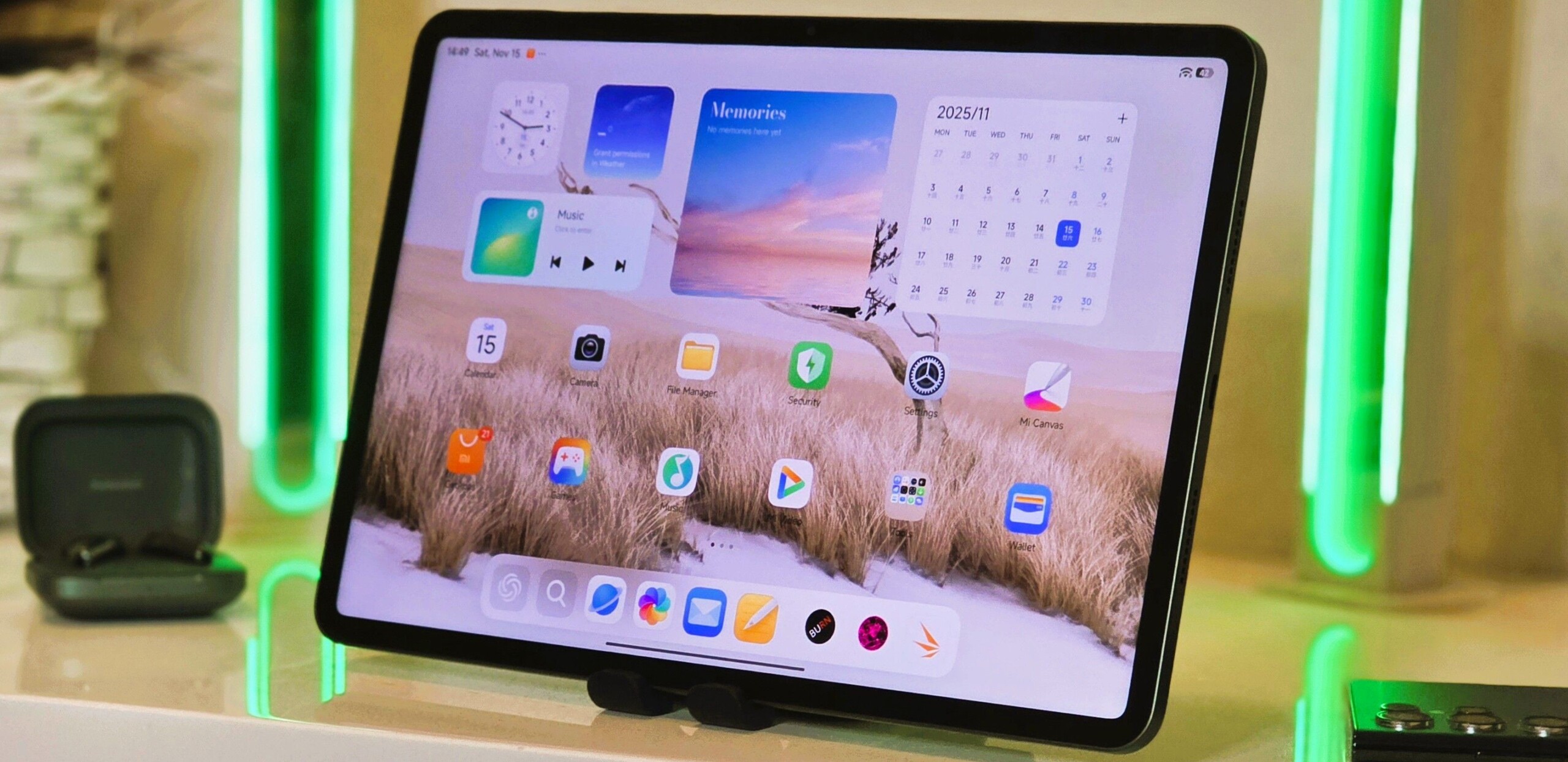


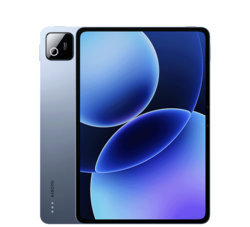

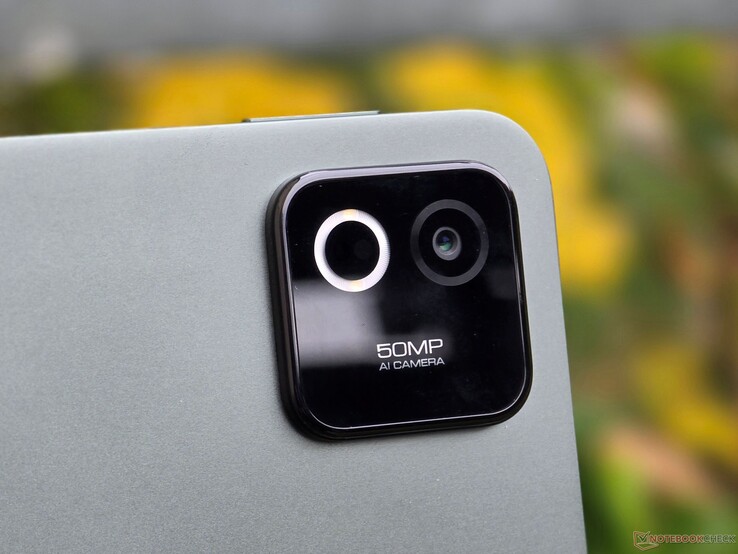





























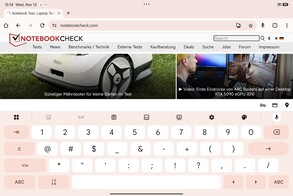

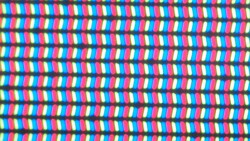
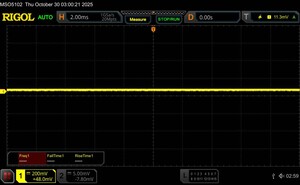


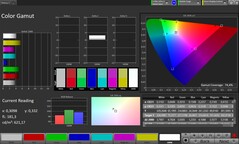

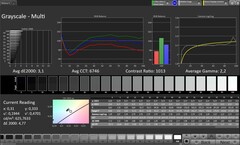
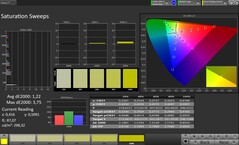
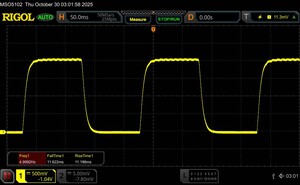

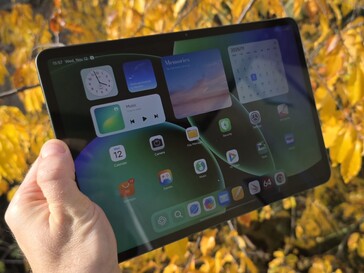
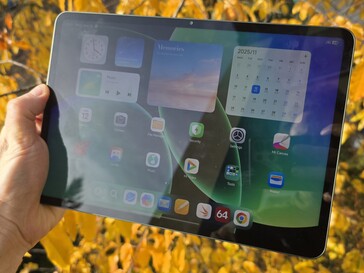




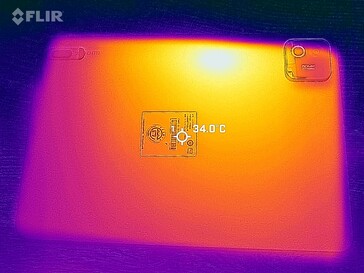
 Total Sustainability Score:
Total Sustainability Score: 




